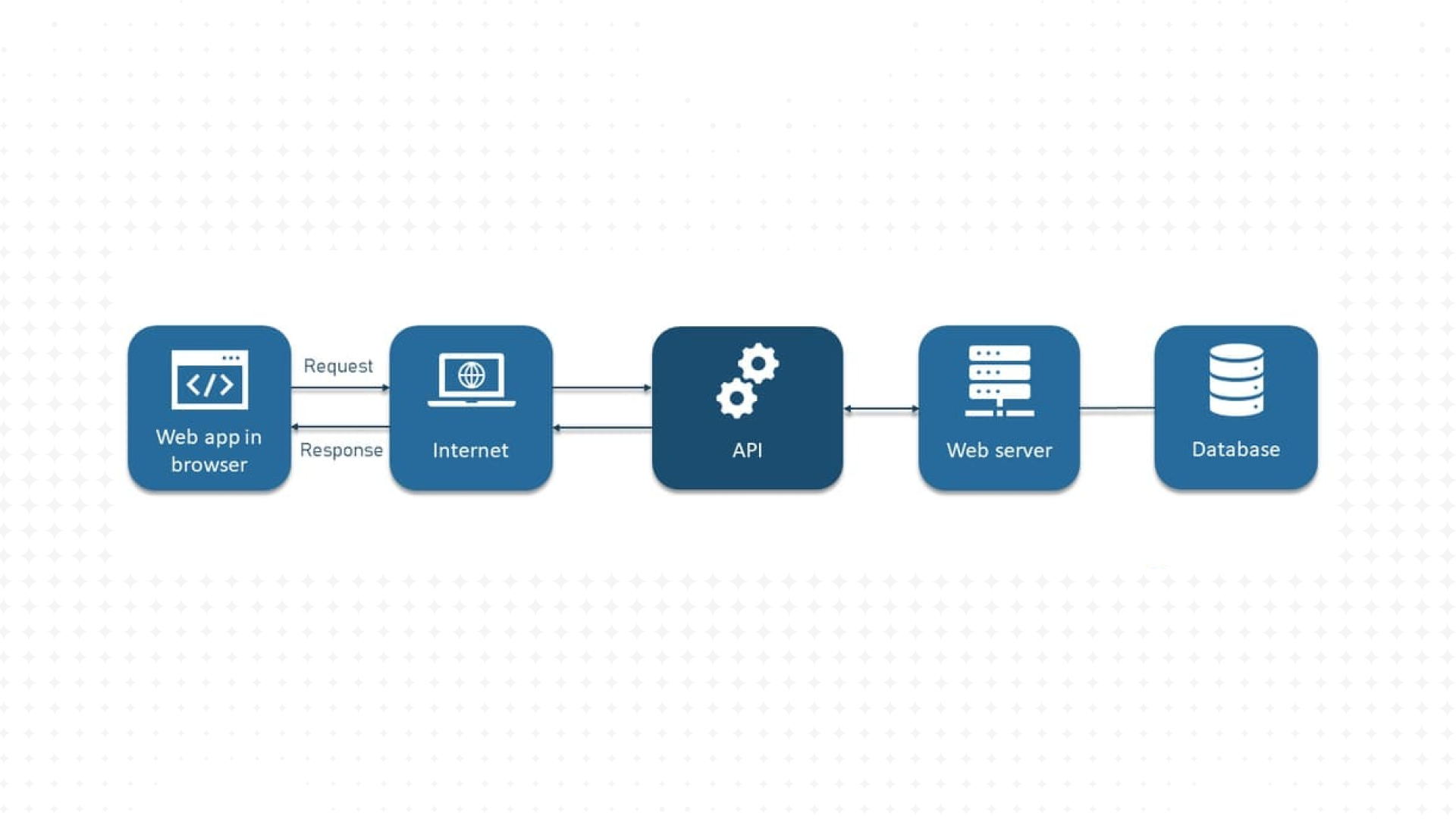In today’s digital world, APIs (Application Programming Interfaces) play a crucial role in enabling software applications to communicate with each other. Whether you’re a developer, business owner, or tech enthusiast, understanding APIs is essential for navigating the modern tech landscape. This guide will provide a beginner-friendly overview of API development, explaining its importance, types, and how it enhances digital products. APIs are widely used across industries, from e-commerce and social media to finance and healthcare, ensuring smooth interoperability between applications and systems. With the rise of cloud computing and mobile applications, API-driven architectures have become the backbone of modern digital ecosystems, enabling seamless integrations and automation.

What is an API?
Defining APIs and Their Purpose
An API is a set of rules and protocols that allow different software applications to communicate. It acts as a bridge between different systems, enabling data exchange and functionality sharing without exposing the internal workings of an application. APIs facilitate data retrieval, modification, and deletion by enabling controlled access to an application’s backend resources. Businesses rely on APIs to streamline processes, integrate with third-party services, and develop feature-rich applications without building everything from scratch. APIs can be private (internal use), partner-based (restricted access), or public (open to developers and businesses), each serving a unique purpose in enhancing software capabilities and connectivity.

How APIs Work
The Role of Requests and Responses
APIs operate through request-response cycles. A client (such as a web application or mobile app) sends a request to an API, which then processes the request and returns a response with the requested data or action. Requests are made using HTTP methods such as GET (retrieve data), POST (send data), PUT (update data), and DELETE (remove data). APIs use standardized formats like JSON and XML for data exchange, ensuring compatibility between different programming languages and systems. API endpoints serve as access points to specific resources, defining how and where requests should be directed. Well-structured APIs are essential for efficient communication between applications, enabling seamless functionality across platforms.

Types of APIs
Exploring Different API Architectures
- REST APIs (Representational State Transfer): The most common type, using HTTP requests to interact with resources. REST APIs follow stateless principles, making them scalable and efficient for web applications and cloud services.
- SOAP APIs (Simple Object Access Protocol): A more structured API using XML for secure messaging. SOAP APIs are widely used in enterprise applications requiring high security and reliability.
- GraphQL APIs: Allows clients to request only the data they need, reducing bandwidth usage. GraphQL enables flexible and efficient data queries, making it ideal for modern web and mobile applications.
- Webhooks: Event-driven APIs that send real-time updates when specific conditions are met. Webhooks enable automation and instant notifications for various applications, from payment processing to social media integrations.
Why API Development is Important
Enabling Seamless Integration
APIs allow businesses to connect services, automate processes, and enhance user experiences by integrating third-party functionalities like payment gateways, social media logins, and cloud services. APIs reduce development time by enabling the reuse of existing technologies, allowing businesses to focus on innovation rather than rebuilding functionalities. The ability to integrate with multiple platforms ensures that companies can provide omnichannel experiences, catering to users across web, mobile, and IoT devices. APIs also facilitate data analytics, enabling businesses to collect and analyze information from various sources to make informed decisions. By leveraging APIs, companies can scale their digital operations efficiently and adapt to technological advancements without major overhauls.

Key Components of API Development
Essential Elements for Building APIs
- Endpoints: URLs where APIs receive requests. Well-defined endpoints ensure efficient data retrieval and processing.
- Authentication & Security: Protecting data with tokens, OAuth, and API keys. Strong authentication mechanisms prevent unauthorized access and safeguard sensitive information.
- Rate Limiting: Preventing excessive API usage to maintain performance. Rate limiting controls the number of requests a user can make within a specific time frame, preventing server overload.
- Documentation: Providing clear instructions for developers using the API. Comprehensive API documentation enhances usability and ensures smooth integration for developers working with the API.

API Development Best Practices
Ensuring Efficient and Scalable APIs
- Use RESTful principles for simplicity and efficiency. Adhering to RESTful architecture ensures APIs are scalable, maintainable, and easy to use.
- Ensure strong security measures, such as encryption and authentication. Protecting APIs from threats such as data breaches and unauthorized access is crucial for maintaining trust and compliance.
- Provide comprehensive documentation for developers. Clear and detailed API documentation facilitates quick adoption and integration, reducing development time.
- Optimize performance with caching and efficient data retrieval. Caching frequently accessed data reduces response times and enhances API performance. Implementing best practices ensures that APIs remain robust, scalable, and adaptable to evolving business needs.

Real-World API Use Cases
How APIs Power Everyday Applications
- E-commerce: Payment processing with PayPal or Stripe APIs. APIs facilitate secure and seamless online transactions, enabling businesses to offer multiple payment options.
- Social Media: Integrating Facebook, Twitter, or LinkedIn logins. Social media APIs allow businesses to enhance user engagement and authentication by enabling login and sharing functionalities.
- Maps & Navigation: Using Google Maps or location-based APIs. Location-based services improve user experiences by providing real-time navigation, geolocation, and mapping features.
- Cloud Storage: Syncing data with Dropbox or Google Drive APIs. Cloud storage APIs enable users to access, share, and synchronize data across multiple devices and applications.
- Healthcare: Telemedicine platforms using APIs for patient records and virtual consultations. APIs in healthcare enable seamless data exchange between medical systems, ensuring accurate and secure patient information.
- Finance: Banks using APIs for digital banking and payment processing. Open banking APIs allow financial institutions to offer personalized services, automate transactions, and improve customer experiences. The widespread adoption of APIs across industries highlights their significance in driving digital transformation and enhancing operational efficiency.
Conclusion
The Growing Importance of APIs in Digital Transformation
APIs are the backbone of modern software development, enabling seamless integrations and enhancing user experiences. Whether you’re a business looking to automate operations or a developer building digital solutions, understanding API development is essential for success in today’s technology-driven world. As the demand for connectivity and interoperability grows, APIs will continue to play a pivotal role in shaping the future of digital products and services. Companies investing in API development will gain a competitive edge by fostering innovation, streamlining processes, and delivering superior user experiences. If you’re building a digital product in Dubai, consider working with UIUX.studio Dubai to create scalable and high-performance solutions that drive business growth. By prioritizing usability, security, and innovation, Dubai-based tech companies can continue to set new benchmarks for digital transformation, expanding their impact on the global stage.






